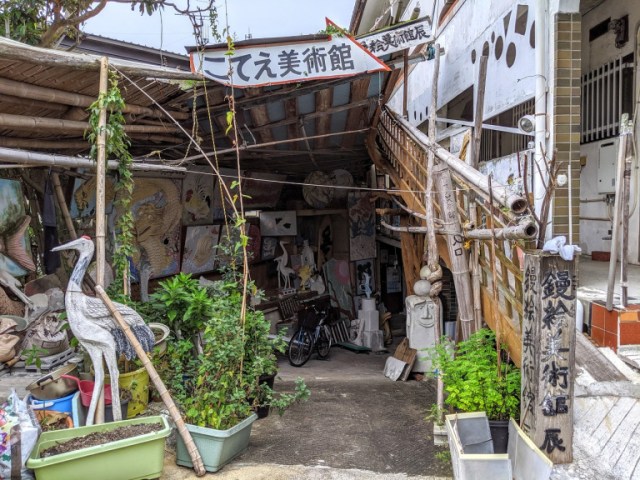
We visit a museum for the common but under-appreciated Japanese art of kote-e.
After reading the news that Banksy’s reboot of “Dogs Playing Poker” had recently sold for US$12 million, our reporter Masanuki Sunakoma was feeling a little down on the art world. So, he decided to look around for some real down-to-earth artistic expression for a change.
His search led him to the Miura Kote-e Museum of Art in a residential area Onojo City, Fukuoka Prefecture. Kote-e, which literally translates to “trowel picture,” is a Japanese art form that is said to date back to 200 BC. As the name suggests, it involves making decorative reliefs with plaster and a trowel.
▼ A trowel, typically used in gardening or to smooth concrete, not for making artwork.
This museum was run by noted kote-e artist Tatsuhiko Miura and contains over 200 of his works. However, it would be difficult to find, tucked away in a residential neighborhood near Mizuki Station. Luckily, the giant plaster dragon out front helped our reporter find his way.
A couple of school children walked passed without acknowledging the dragon or the little man triumphantly standing on its nose. Masanuki figured they were just too washed up in Banksy-mania to appreciate some real art for a change.
He walked toward the front of the museum where a crudely constructed alcove stood with various works hung inside. The sign which read “Kote-e Museum of Art” pointed Masanuki to a rickety ramp leading to the second floor.
As the wooden planks buckled and creaked beneath his feet, our reporter wasn’t sure if this entrance was up to fire code standards, but he could be sure of its authenticity.
“Now, this is where the real art is,” he thought excitedly to himself.
However, upon reaching the second floor Masanuki was surprised to find nothing. It just looked like a typical external corridor of an apartment complex.
▼ “Is this… the art?”
After finding a normal staircase back down to the ground and searching around a little, he found that there was actually an entrance to the museum behind the alcove. It looked like the building’s old underground parking lot had been converted into the Miura Kote-e Museum.
It was a little daunting to go through the erratically arranged pile of junk and art, but the actual museum’s interior was surprisingly clean and well-organized.
No one was there, but signs instructed Masanuki that no admission was needed, he could turn the lights on or off freely, and photography was fine. It was about as chill a museum as one could find. All around him were traditional imagery, cartoon characters, and everything in between, all done in the distinctive kote-e style.
There were far too many works to document each one, but some that really stood out for Masanuki included “Oehon” which depicted a missionary holding a picture book.
There was also this one showing a man with both his arms and necktie cut short, perhaps symbolic of how our busy modern lives are cutting short our very freedoms.
Then there was this one which Masanuki didn’t really understand at all, so it must have been operating on a deep artistic level that was beyond his sensibilities.
Also present throughout the museum were mysterious figures without any pants such as this young man here.
There was also this trouserless lady titled “Hatsune Miku.”
The highlight of the exhibit was “Hana wa Hana wa Hana wa Saku” (Flowers, Flowers, Flowers Bloom) which according to a note by Miura, “was in a poster which hung in a new building of the Louvre.” Copies of the poster hung beside the original piece.
Another recognized work was “Waaaa Sugoi” (Wow Great) which had received an award in Thailand.
Walking out of the main hall, Masanuki could say without a doubt that this was some truly original art. The museum had challenged him to think about certain things as much as it had challenged him to find the entrance.
There were a few other pieces in the museum’s exterior such as this one which harks back to a more classical style of kote-e.
There was also a statue of what appeared to be an upper-middle-aged man morphing into a woman. Masanuki wasn’t sure if this was an actual work on display or something just lying around, but it really spoke to him.
All in all, the Miura Kote-e Museum of Art really refreshed Masanuki’s artistic batteries and got him ready to go back out into the world where he’d read about more overhyped and overvalued works of high art in the news. Heck, he might even start following Jeff Koons on Twitter after this.
Museum information
Miura Kote-e Art Museum / 三浦鏝絵美術館
Address: Fukuoka-ken, Onojo-shi, Shimo-ori 4-7-1
福岡県大野城市下大利4-7-1
Hours: Sunrise to sunset, seven days a week
Photos: ©SoraNews24
● Want to hear about SoraNews24’s latest articles as soon as they’re published? Follow us on Facebook and Twitter!
[ Read in Japanese ]

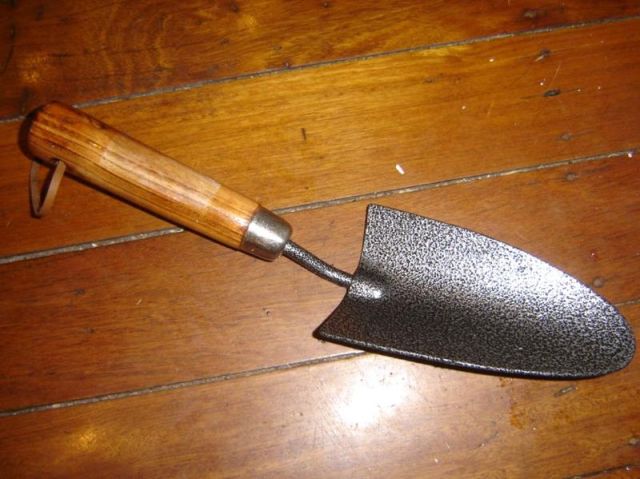
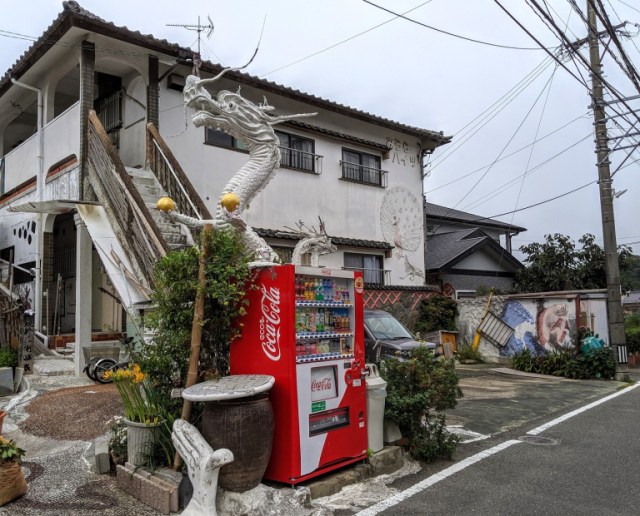
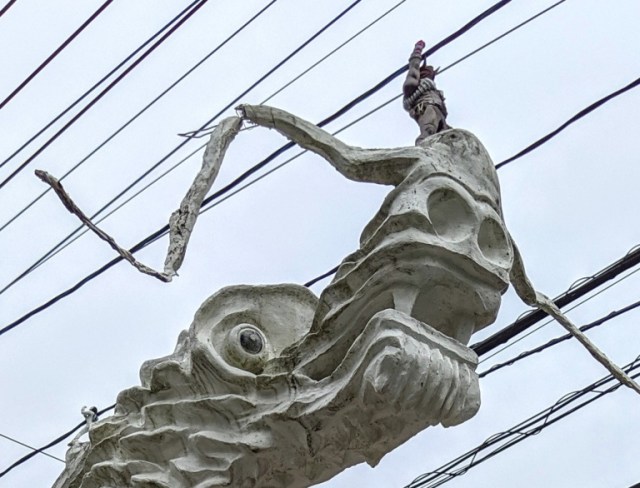
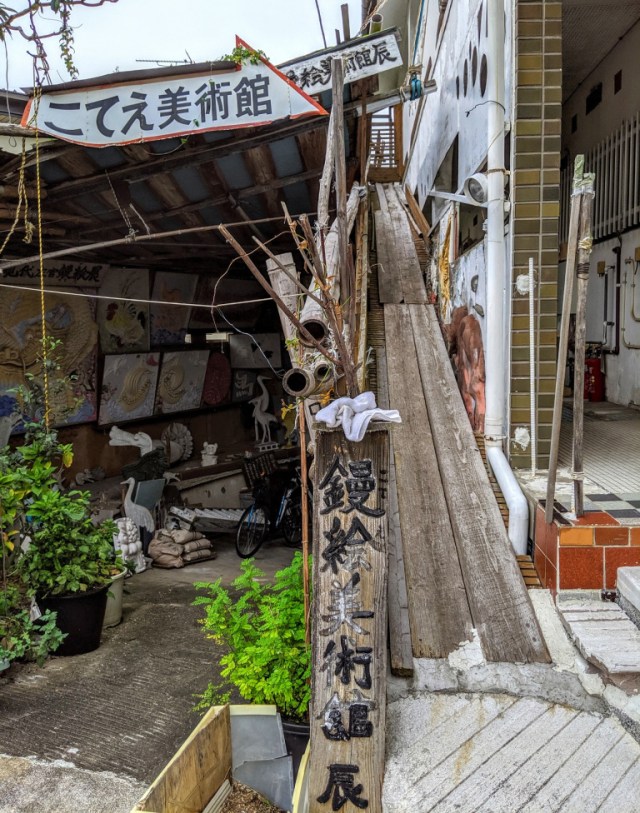
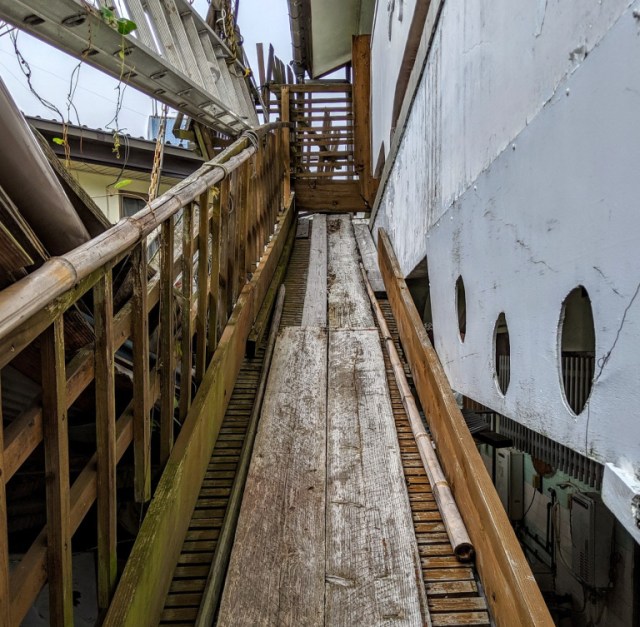
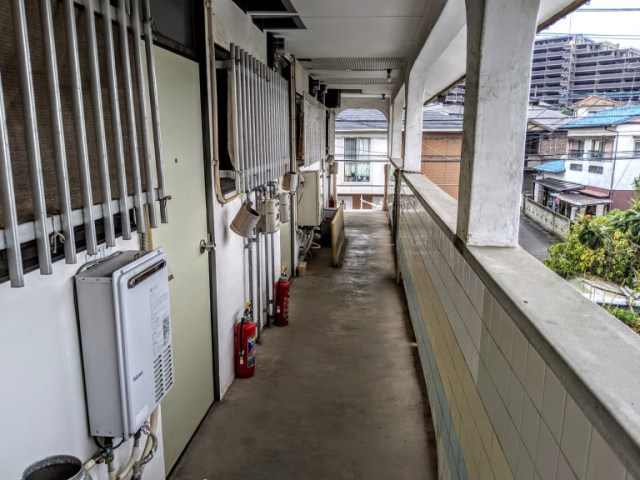
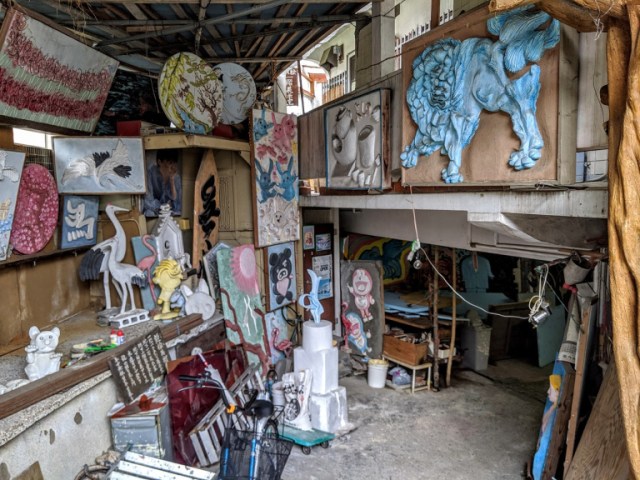

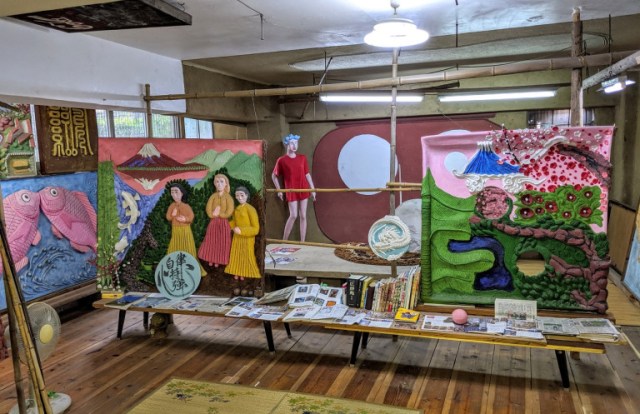
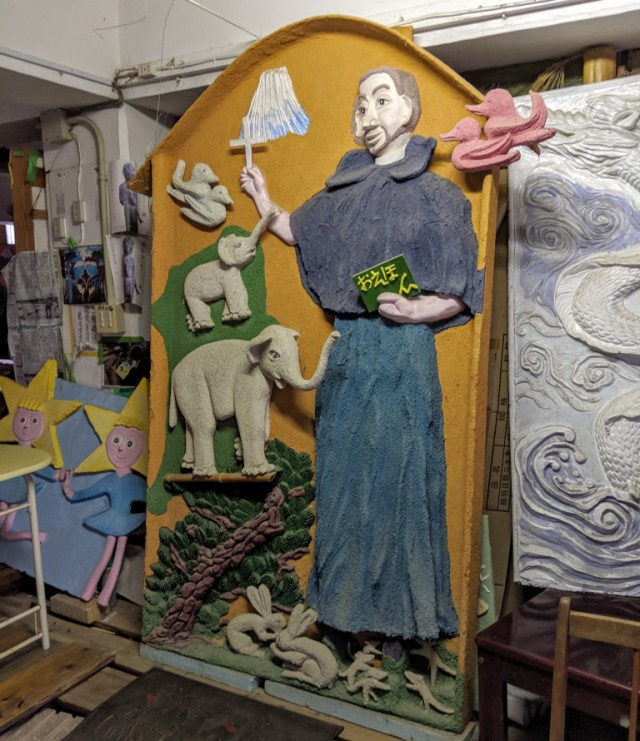
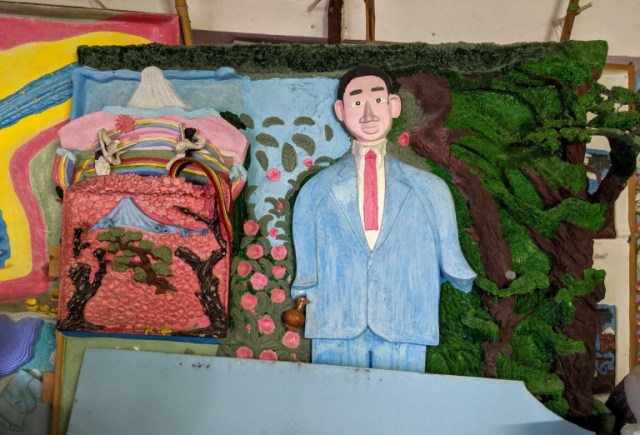
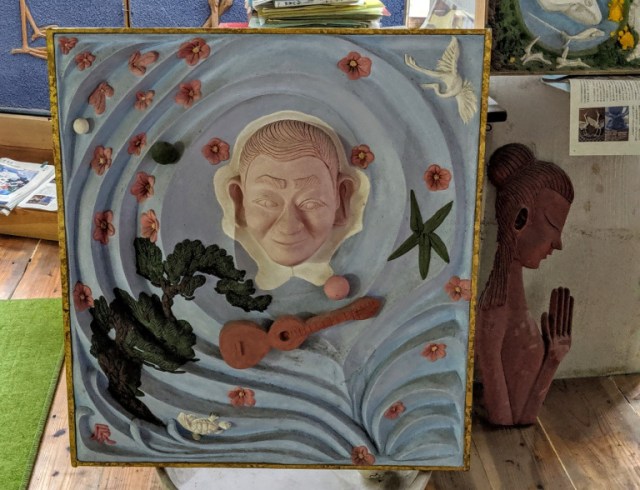
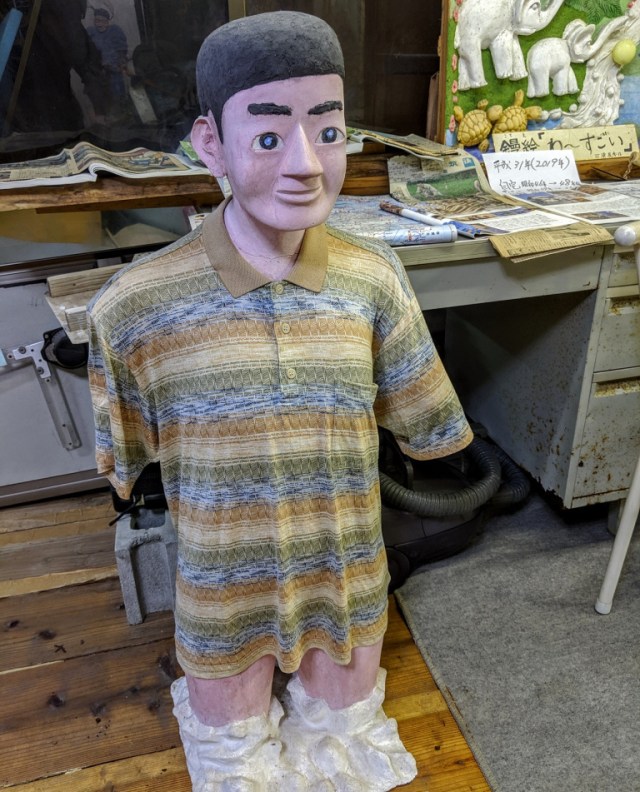
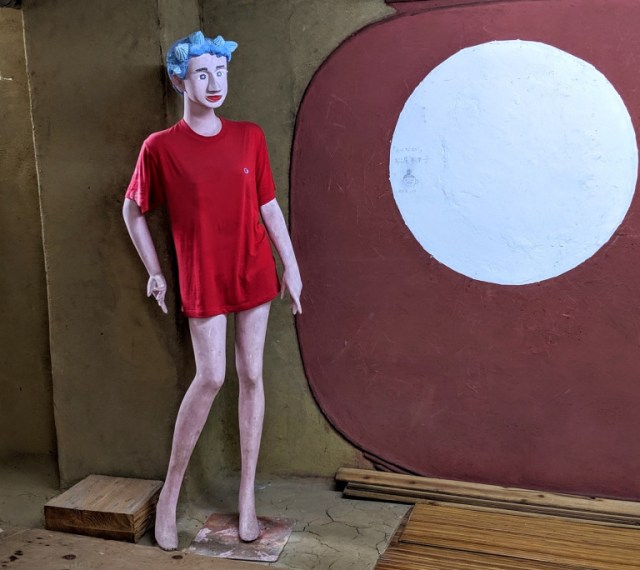
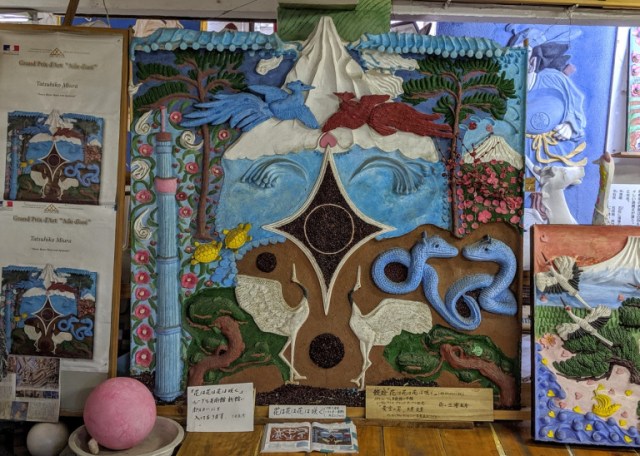
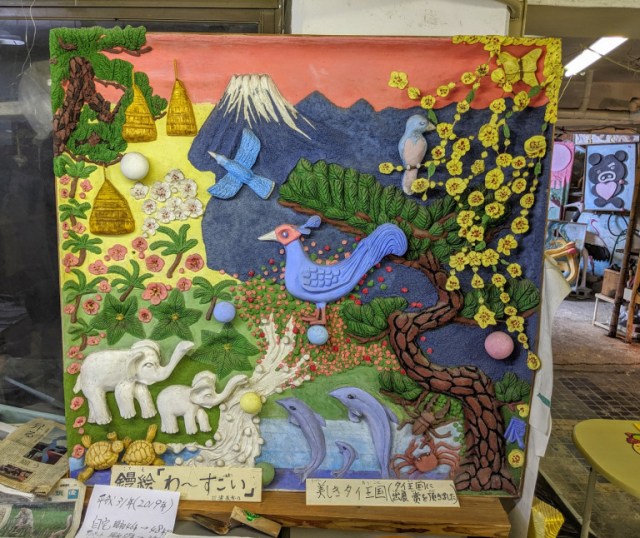
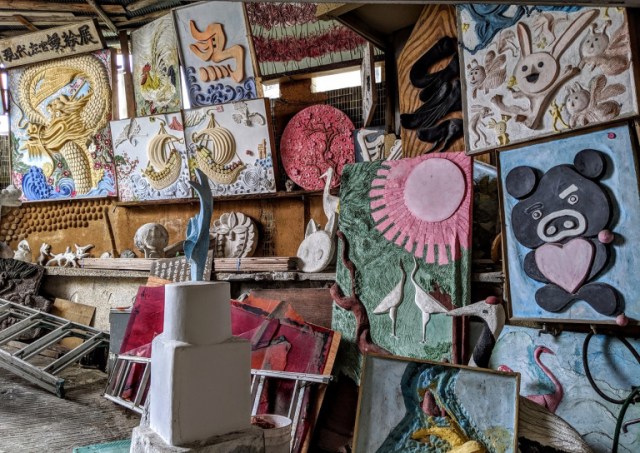
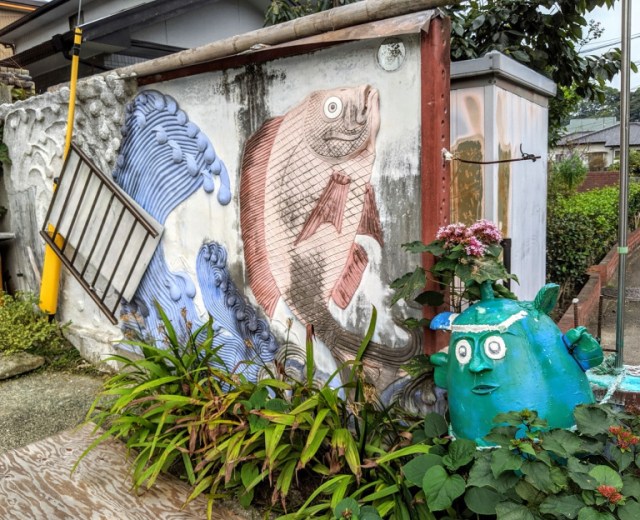

 We eat a meal to remember…at a Japanese police station in Fukuoka
We eat a meal to remember…at a Japanese police station in Fukuoka Digital-age robber epically owned by analog granny at convenience store in Fukuoka
Digital-age robber epically owned by analog granny at convenience store in Fukuoka UPDATE: Situation remains serious at scene of road collapse in Fukuoka
UPDATE: Situation remains serious at scene of road collapse in Fukuoka We eat an intimidating curry with toppings randomly chosen for us by CoCo Ichibanya’s ‘Gacha’ app
We eat an intimidating curry with toppings randomly chosen for us by CoCo Ichibanya’s ‘Gacha’ app Celebrating Bruce Lee’s 75th birthday with a Hong Kong pilgrimage
Celebrating Bruce Lee’s 75th birthday with a Hong Kong pilgrimage Foreigner’s request for help in Tokyo makes us sad for the state of society
Foreigner’s request for help in Tokyo makes us sad for the state of society Seaside scenery, history, and so many desserts on Yokohama’s Akai Kutsu【Japan Loop Buses】
Seaside scenery, history, and so many desserts on Yokohama’s Akai Kutsu【Japan Loop Buses】 Red light district sushi restaurant in Tokyo shows us just how wrong we were about it
Red light district sushi restaurant in Tokyo shows us just how wrong we were about it Mikado Coffee is a 76-year-old coffee chain with a major celebrity connection
Mikado Coffee is a 76-year-old coffee chain with a major celebrity connection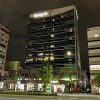 Japan’s best-amenity budget hotel chain gets extra-affordable with “Global Cabin” rooms
Japan’s best-amenity budget hotel chain gets extra-affordable with “Global Cabin” rooms Studio Ghibli glasses cases let anime characters keep an eye on your spectacles
Studio Ghibli glasses cases let anime characters keep an eye on your spectacles Historical figures get manga makeovers from artists of Spy x Family, My Hero Academia and more
Historical figures get manga makeovers from artists of Spy x Family, My Hero Academia and more Japan’s summertime towelket pillowcases are even better with the addition of Ghibli stars【Photos】
Japan’s summertime towelket pillowcases are even better with the addition of Ghibli stars【Photos】 Should you add tartar sauce to Japanese curry rice? CoCo Ichi makes diners an unusual offer
Should you add tartar sauce to Japanese curry rice? CoCo Ichi makes diners an unusual offer Akihabara pop-up shop sells goods made by Japanese prison inmates
Akihabara pop-up shop sells goods made by Japanese prison inmates McDonald’s new Happy Meals offer up cute and practical Sanrio lifestyle goods
McDonald’s new Happy Meals offer up cute and practical Sanrio lifestyle goods Japanese ramen restaurants under pressure from new yen banknotes
Japanese ramen restaurants under pressure from new yen banknotes French Fries Bread in Tokyo’s Shibuya becomes a hit on social media
French Fries Bread in Tokyo’s Shibuya becomes a hit on social media New private rooms on Tokaido Shinkansen change the way we travel from Tokyo to Kyoto
New private rooms on Tokaido Shinkansen change the way we travel from Tokyo to Kyoto Tokyo Tsukiji fish market site to be redeveloped with 50,000-seat stadium, hotel, shopping center
Tokyo Tsukiji fish market site to be redeveloped with 50,000-seat stadium, hotel, shopping center Japanese city loses residents’ personal data, which was on paper being transported on a windy day
Japanese city loses residents’ personal data, which was on paper being transported on a windy day Beautiful Ghibli sealing wax kits let you create accessories and elegant letter decorations【Pics】
Beautiful Ghibli sealing wax kits let you create accessories and elegant letter decorations【Pics】 Secret Kitchen bento serves Japanese flowers, birds, wind and moon in a box, but is it worth it?
Secret Kitchen bento serves Japanese flowers, birds, wind and moon in a box, but is it worth it? New definition of “Japanese whiskey” goes into effect to prevent fakes from fooling overseas buyers
New definition of “Japanese whiskey” goes into effect to prevent fakes from fooling overseas buyers Our Japanese reporter visits Costco in the U.S., finds super American and very Japanese things
Our Japanese reporter visits Costco in the U.S., finds super American and very Japanese things Studio Ghibli releases Kiki’s Delivery Service chocolate cake pouches in Japan
Studio Ghibli releases Kiki’s Delivery Service chocolate cake pouches in Japan All-you-can-drink Starbucks and amazing views part of Tokyo’s new 170 meter-high sky lounge
All-you-can-drink Starbucks and amazing views part of Tokyo’s new 170 meter-high sky lounge More foreign tourists than ever before in history visited Japan last month
More foreign tourists than ever before in history visited Japan last month New Pokémon cakes let you eat your way through Pikachu and all the Eevee evolutions
New Pokémon cakes let you eat your way through Pikachu and all the Eevee evolutions Disney princesses get official manga makeovers for Manga Princess Cafe opening in Tokyo
Disney princesses get official manga makeovers for Manga Princess Cafe opening in Tokyo Sales of Japan’s most convenient train ticket/shopping payment cards suspended indefinitely
Sales of Japan’s most convenient train ticket/shopping payment cards suspended indefinitely Sold-out Studio Ghibli desktop humidifiers are back so Totoro can help you through the dry season
Sold-out Studio Ghibli desktop humidifiers are back so Totoro can help you through the dry season Japanese government to make first change to romanization spelling rules since the 1950s
Japanese government to make first change to romanization spelling rules since the 1950s Ghibli founders Toshio Suzuki and Hayao Miyazaki contribute to Japanese whisky Totoro label design
Ghibli founders Toshio Suzuki and Hayao Miyazaki contribute to Japanese whisky Totoro label design Doraemon found buried at sea as scene from 1993 anime becomes real life【Photos】
Doraemon found buried at sea as scene from 1993 anime becomes real life【Photos】 Tokyo’s most famous Starbucks is closed
Tokyo’s most famous Starbucks is closed One Piece characters’ nationalities revealed, but fans have mixed opinions
One Piece characters’ nationalities revealed, but fans have mixed opinions We asked a Uniqlo employee what four things we should buy and their suggestions didn’t disappoint
We asked a Uniqlo employee what four things we should buy and their suggestions didn’t disappoint European and American Men’s Wig: the lowest-rated wig on Amazon Japan
European and American Men’s Wig: the lowest-rated wig on Amazon Japan Japanese sweets box from Amazon Japan is a treasure trove of dagashi nostalgia
Japanese sweets box from Amazon Japan is a treasure trove of dagashi nostalgia The new Simose Art Museum in Hiroshima houses a floating, futuristic surprise next to the sea
The new Simose Art Museum in Hiroshima houses a floating, futuristic surprise next to the sea We try Amazon’s lowest rated posing mannequin, but it wasn’t the doll that was one star
We try Amazon’s lowest rated posing mannequin, but it wasn’t the doll that was one star Aichi Prefectural Museum of Art forced to cover up “obscene” photos following complaint
Aichi Prefectural Museum of Art forced to cover up “obscene” photos following complaint What happens when our team starts renovating our cheap countryside house in Japan?
What happens when our team starts renovating our cheap countryside house in Japan? Adventures in Morocco: Our Japanese language reporter orders a hamburger, gets a surprise
Adventures in Morocco: Our Japanese language reporter orders a hamburger, gets a surprise This bath bomb looks and feels like an Edo gold bar, is great for gifts or bathing like a shogun
This bath bomb looks and feels like an Edo gold bar, is great for gifts or bathing like a shogun Details of the Pokémon/Van Gogh art museum crossover are just as adorable as we’d hoped【Pics】
Details of the Pokémon/Van Gogh art museum crossover are just as adorable as we’d hoped【Pics】 Japanese manga hotel rooms strictly prohibit reality, want guests to drown in works all night
Japanese manga hotel rooms strictly prohibit reality, want guests to drown in works all night Super-cheap Online Shopping – Can you make a capsule hotel look cool with a 365-yen aurora light?
Super-cheap Online Shopping – Can you make a capsule hotel look cool with a 365-yen aurora light? Let’s visit Machu Picchu located in the mountains of USA, Japan!
Let’s visit Machu Picchu located in the mountains of USA, Japan! Japanese convenience store food takes a walk on the weird side with…cup pork?
Japanese convenience store food takes a walk on the weird side with…cup pork? Kicking off the new year with a gathering of the most famous dekotora in Japan
Kicking off the new year with a gathering of the most famous dekotora in Japan The Big Bomb Onigiri Japanese rice ball helps us conquer mountain race but conquers us in the end
The Big Bomb Onigiri Japanese rice ball helps us conquer mountain race but conquers us in the end Trying on Amazon Japan’s low-rated tattoo shirt to feel like a Showa-era punk
Trying on Amazon Japan’s low-rated tattoo shirt to feel like a Showa-era punk
Leave a Reply